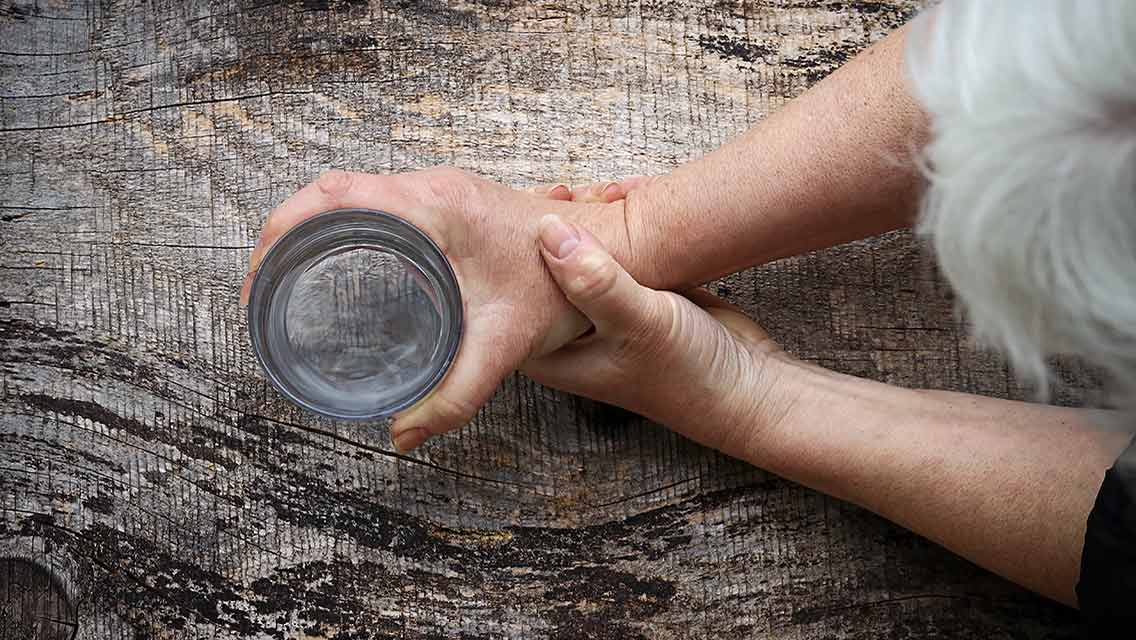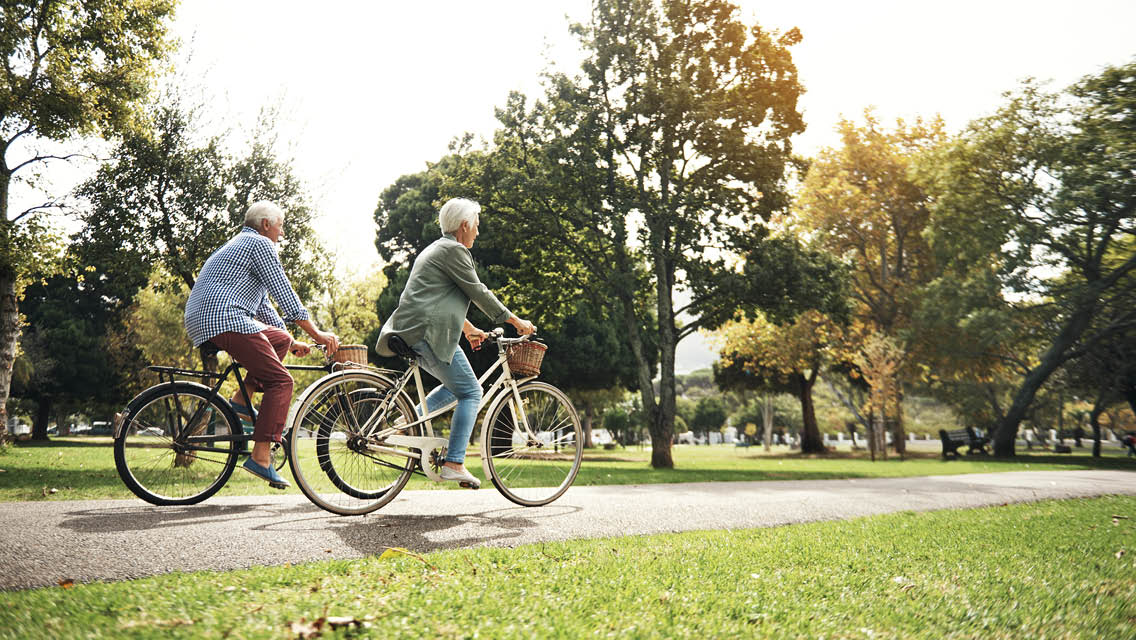I’m reasonably confident that I don’t have Parkinson’s disease, though my old pal Leo, who does, often likes to call attention to a slight tremor in my left hand when we’re kibbitzing at the coffee shop. “It’s just the caffeine,” I assure him (and myself) — nothing to worry about.
None of the other symptoms — slowed movement, rigid muscles, impaired posture, or speech problems — seem to have surfaced, which makes me think I’m mostly in the clear. Then I notice how my handwriting sometimes crumbles into gibberish, which seems vaguely disconcerting. I’ve never been one to “catastrophize” these sorts of things (sign above my desk: “Learn to love not knowing.”), but such incidents do give one pause.
So, it’s been interesting — OK, reassuring — to learn about recent advances in Parkinson’s research that suggest lifestyle changes may help mitigate the physical and mental toll this currently incurable disease can exact.
Diet — as it affects the gut microbiome — may play a role, according to the results of a study published last week in Nature Communications. Neurologist Haydeh Payami, PhD, and her team of researchers at the University of Alabama at Birmingham analyzed stool samples from 490 people living with Parkinson’s and found an overabundance of certain inflammatory pathogens and toxic molecules, as well as a specific bacterial product called curli. The resulting imbalance in their gut microbiomes, Payami suggests, causes the dysregulation of neurotransmitters that characterizes Parkinson’s.
“We found that over 30 percent of the micro-organisms and bacterial genes and pathways tested have altered abundances in Parkinson’s disease, which indicates a widespread imbalance,” she says.
To hear Payami tell it, ongoing research in this field, known as metagenomics, will likely reveal more about how diet may effectively rebalance the gut microbiome and perhaps reduce the risk of Parkinson’s: “We anticipate that in the near future we will have the tools and the analytic power to use metagenomics as a new approach to study Parkinson’s disease heterogeneity, search for biomarkers, delve deeper into the origin and progression of Parkinson’s disease subphenotypes, and investigate the potential in manipulating the microbiome to prevent, treat, and halt the progression of Parkinson’s disease.”
Payami’s study doesn’t offer much in the way of dietary recommendations, but there’s plenty of research touting the value of adding certain types of food to your diet when experiencing bacterial imbalances in the gut microbiome. I suspect she’d be leaning more toward manipulative processes such as fecal transplants, which have already been shown to be an effective rebalancing tool. And, while certain aspects of the procedure tend to diminish my enthusiasm — despite its salutary effects — I can imagine it could prove incrementally more attractive should I eventually find myself beset by Parkinson’s more debilitative symptoms. Meanwhile, there’s always yogurt.
Caroline Tanner, MD, PhD, a neurology professor at the University of California San Francisco, predicts that the 90,000 cases of Parkinson’s currently diagnosed each year could fall by almost half by 2030 if we simply exercised more regularly and vigorously.
Caroline Tanner, MD, PhD, a neurology professor at the University of California San Francisco, predicts that the 90,000 cases of Parkinson’s currently diagnosed each year could fall by almost half by 2030 if we simply exercised more regularly and vigorously. “This could have amazing public-health consequences,” she tells Marlene Cimons in the Washington Post.
The anecdotal evidence supporting this view is certainly compelling. Cimons cites the case of Bob Sevene, 79, who struggled to stand upright and needed a back brace and walker to get around following his 2019 diagnosis. Last year, Sevene began a noncontact boxing regimen designed for Parkinson’s sufferers as well as a daily high-intensity fitness routine that includes 25-minute cycling sessions on a stationary bike and brief sprints in the hallway outside his apartment. The results have been transformative; he no longer needs the back brace or walker.
“My doctors have run strength, balance, and gait tests, and everything has improved,” Sevene tells Cimons. “They decided to not up my medicine. I’m convinced exercise is the reason.”
Ryan Cotton, DHSc, CEO of Rock Steady Boxing, a program created for Parkinson’s patients, tells the story of a retired military officer who donned the gloves six years ago, when he needed a walker to steady himself. “He took out all his frustrations on the bag,” Cotton says. “Six months later, he was walking independently and later ran a half-marathon. Today, someone seeing him on the street wouldn’t even notice he had Parkinson’s.”
A bicycle trip across Iowa 20 years ago sparked Jay Alberts’s interest in the power of exercise to treat the disease. Riding a tandem with a Parkinson’s patient, he was struck by the improvements in her handwriting after several days of pedaling. “It was a real ‘aha’ moment,” he recalls. “It got me thinking that maybe something was changing in the brain.”
Alberts, PhD, a neuroscientist at Cleveland Clinic’s Neurological Institute, has been studying the connection between exercise and Parkinson’s ever since. He suspects that a solid fitness regimen ramps up the production of proteins that boost brain-cell growth. “They don’t produce dopamine, but they may reduce the effects of whatever is causing the loss of dopamine,” he explains.
The more vigorous the workout, the more protein the body produces, Alberts says, but any amount of activity is better for the brain than none at all.
He points to a recent study involving 50 Parkinson’s patients who pedaled stationary bikes at a high intensity three times a week for eight weeks. Researchers tested the participants’ ability to react to a timed task prior to the study and again after the two months of workouts. The improvements they noted, Alberts believes, “could aid in the performance of activities of daily living.”
Other research suggests that the secretion of the hormone irisin during endurance exercise may reduce the production of a protein, alpha-synuclein, associated with the development of Parkinson’s. And Tanner argues that regular workouts may ease chronic inflammation, which has been linked to neurological disorders.
More research will certainly be forthcoming, but Tanner and others caution Parkinson’s sufferers against waiting for more evidence before they begin a workout regimen. “There already is enough excellent evidence to suggest this is a very good thing to do if you are a person with Parkinson’s,” she says.
And probably even if you’re pretty sure you’re not.





This Post Has 0 Comments